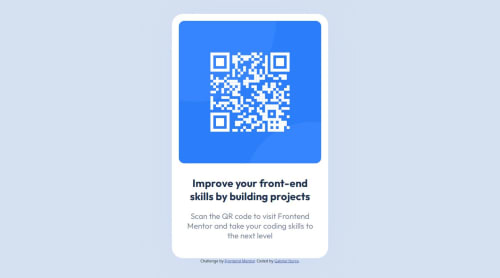Responsive QR Code website using Bootstrap and Flex

Solution retrospective
I was able to actually finish the challenge, even with everyday obstacles (work, life tasks, and so on), and was able to learn and understand better what I developed.
I would try actually to develop future challenges faster. For that I would organize my time better in order to finish this, as I am aware that Frontend Developer jobs have a controlled schedule to finish projects.
What challenges did you encounter, and how did you overcome them?The responsive aspect was difficult. Most of the times the card element would not 'shrink' properly when using different screen.
Also, getting to learn about viewport units and Flex, and try them right away, was not easy.
What specific areas of your project would you like help with?To know any other alternative for achieving responsiveness on the task. For example, was the "clamp" CSS really necessary? Is it better to just use media queries?
This insight would be appreciated, as I am aware this can help in future projects.
Please log in to post a comment
Log in with GitHubCommunity feedback
No feedback yet. Be the first to give feedback on Gabriel Iturra's solution.
Join our Discord community
Join thousands of Frontend Mentor community members taking the challenges, sharing resources, helping each other, and chatting about all things front-end!
Join our Discord